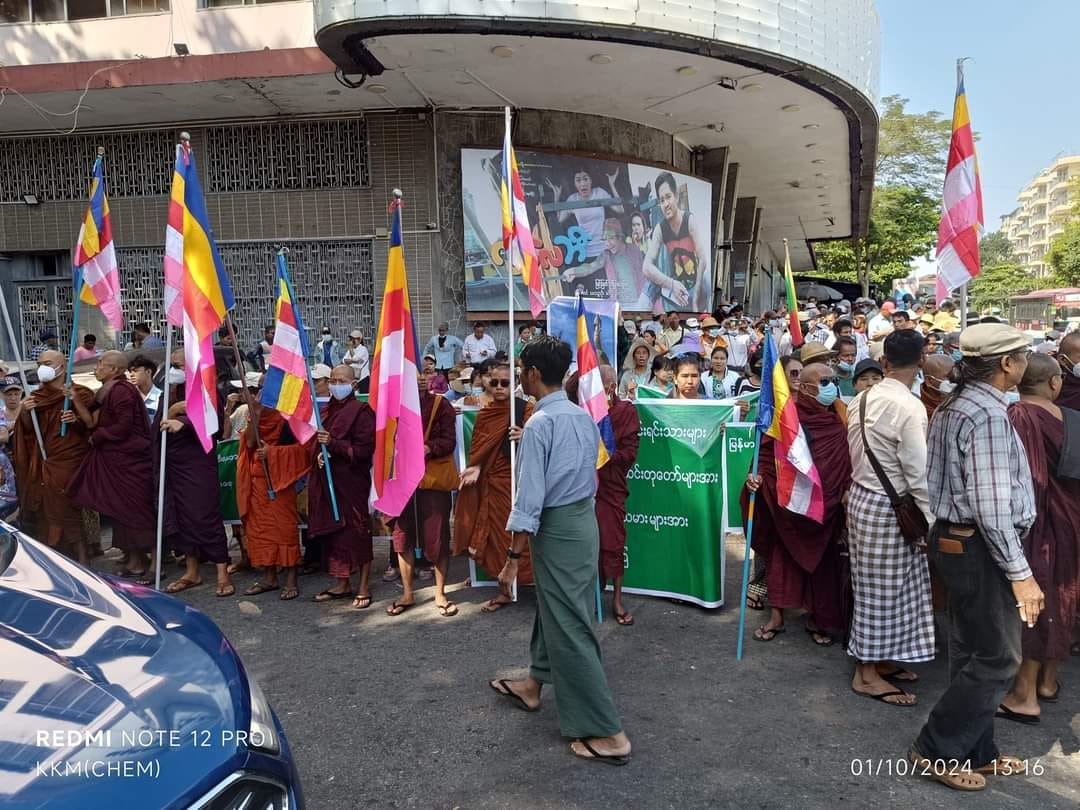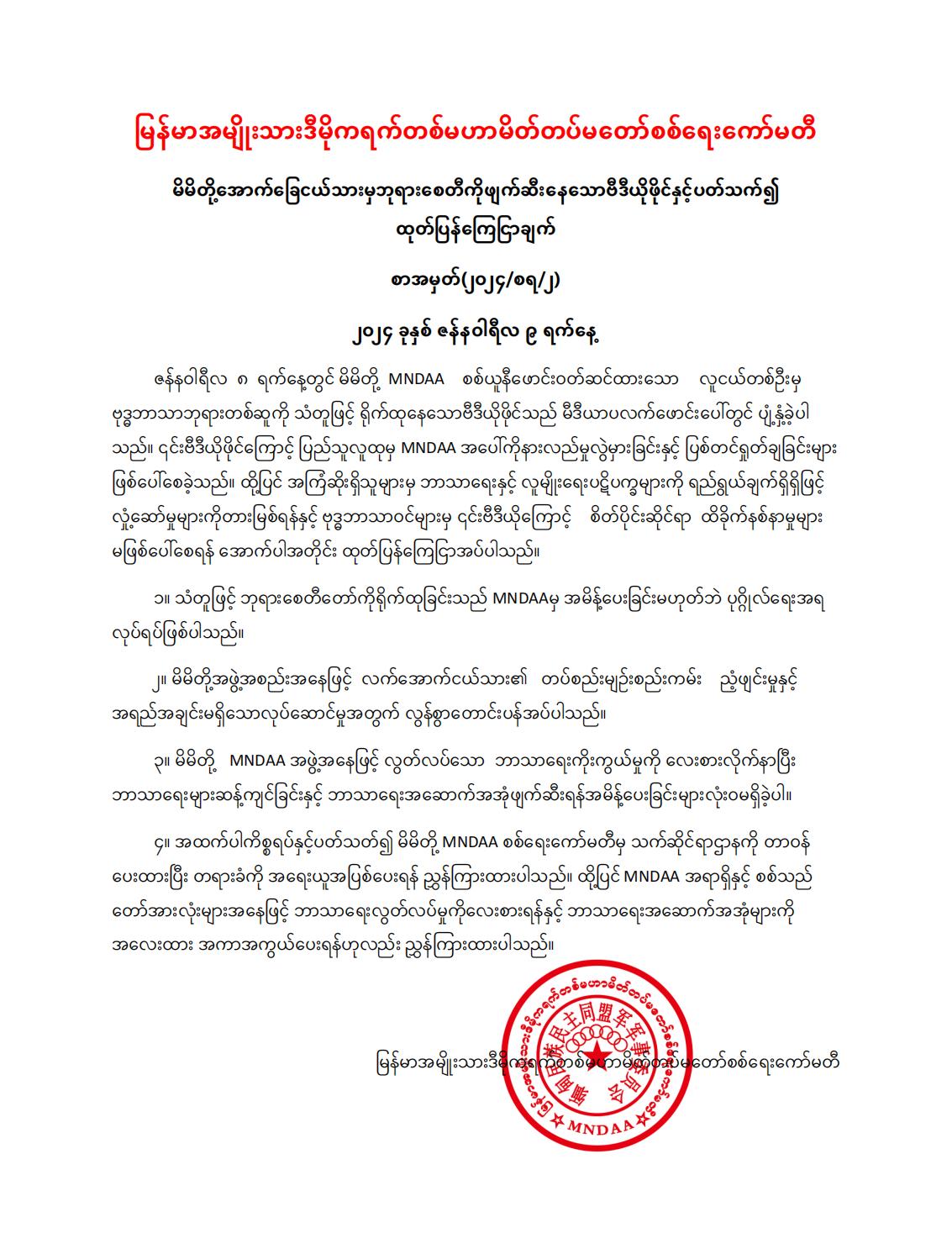A spotlight has fallen on Mount Nan Tianman in northern Shan State’s Kokang Self-Administered Zone after a viral clip of an ethnic resistance fighter damaging its pagoda was pounced on by junta propagandists.
Footage shows a man in Myanmar National Democratic Alliance Army (MNDAA) uniform wielding a sledgehammer against the pagoda on the mountain, which the junta’s military calls Point 2202.
Junta-backed nationalists were quick to organize a series of protests against “terrorists that destroy pagodas” in several towns including Yangon and Mandalay, calling the vandalism an insult to Buddhism.
The MNDAA swiftly issued an official apology, clarifying that religious buildings were not a legitimate target and saying the culprit was acting for personal motivations and would be punished. All MNDAA officers and soldiers have been instructed to respect religious freedom and protect religious buildings, it added.
However, to avoid further trouble, the ethnic armed group did not explain the backstory to the incident.
In fact, the pagoda in question was built by the Myanmar military after it demolished a traditional Kokang spirit shrine on Mt. Nan Tianmen. The military has concealed this fact.
Considering this, the response of the MNDAA soldier, though it looks offensive, is understandable.

Nan Tianmen San
In Chinese, Nan Tianmen means the southern gate of heaven while San means mountain. Perhaps the mountain gets this name for its height. At 6,600 feet above sea level, the mountaintop is often surrounded during cold season by seas of mist that are reminiscent of traditional Chinese depictions of heaven.
The ethnic Chinese Kokang hold traditional Chinese religious beliefs. They worship deities such as Shangdi (the Lord Above) and Tudi (Lord of the Place) as well as their ancestors. These beliefs are unique and integral to their ethnic identity and thus deserve respect.
The spirit shrine on Mt. Nan Tianmen marked a sacred peak that has both religious and cultural significance for the Kokang.
When the MNDAA attempted to retake Kokang from the hands of the Myanmar military in 2015, it based its troops on Mt. Nan Tianmen, which overlooks the Kokang capital of Laukkai. A single small path is the only way up the mountain.

Hundreds of Myanmar military officers and soldiers died attacking MNDAA troops on Mt. Nan Tianmen in 2015. It took two months for the military to seize the mountain, even with heavy air and artillery support.
After the 2015 fighting, the military built pagodas in two locations where it had suffered heavy casualties. One was at mile post 18 on the Konkyan road and the other was on Mt. Nan Tianmen. The military demolished the mountain shrine to make way for the pagoda.
Junta-backed nationalists have condemned the MNDAA for the attack on the pagoda. But is it right to destroy the places of worship of other religions? Is it righteous to eradicate them to make way for a pagoda? The answer will be clear to every fair-minded person.
Myanmar’s military has insulted the beliefs and customs of ethnic people not only in Kokang but in many other places. Ethnic Chin people, who are Christians, have erected wooden crosses in the Chin Hills. The military’s troops have torn them down and used them as firewood.
The primary culprit for the controversy on Mt. Nan Tianmen is the Myanmar military. The vandalism of the pagoda was a direct consequence of the military’s actions on the mountain. The way the Kokang soldier responded may be wrong, but it is the Myanmar military that first insulted the beliefs of Kokang people, destroying a sacred landmark of their religion and culture.

















